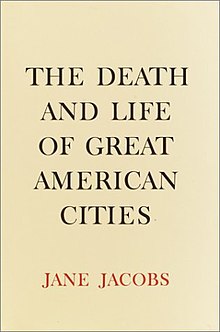Recent crises have reignited discussion and debate about America’s urban cultures. The coronavirus pandemic, it’s been widely observed, hit cities much harder than rural or suburban areas. Rioting and protests have bogged down, closed down, defaced, or even destroyed parts of some of our cities. These crises have raised questions about the health—medical, economic, and spiritual—of city life. Has the centuries-long trend toward urbanization been a big mistake?
Some may be inclined to think so. One of the great debates in the early years of the United States was between those who envisioned a nation of small farmers and craftsmen, and those who advocated a modern economy composed of commerce and industry, which would give rise to great cities. The first group, led by Thomas Jefferson, believed that individual landowning and the production of most of what one needed for one’s own sustenance fostered the independence of outlook that was necessary to preserve a republican government. The second group, led by Alexander Hamilton, held that moral and economic progress could only be achieved by the cooperation of large numbers of people and that the future greatness of the country depended on government policy that promoted trade and industrial development. The debate had many facets, including the federalist structure of government, but the basic divide between the desirability of an agrarian versus an urban society was one important element.
Both sides of the debate have continued to have their advocates and both tendencies have influenced the development of the country, but it’s clear at this point that Hamilton has largely come out on top. Populations around the country and around the world have continued to “vote with their feet” and chosen to inhabit cities—the bigger the better. The twentieth century witnessed a trend remarkable for its consistency across geography and time: As nations developed economically (got richer), people moved from rural to urban areas. In 2007, for the first time in human history, more people lived in cities than outside of them. It’s estimated that, by 2050, two-thirds of the world’s population will live in cities. If that is the case, then it’s vitally important that we continue to improve our capacity to live together productively and peacefully in our ever-swelling metropolises.
Although the problems confronting every generation have their own unique characteristics, we can learn much from past struggles. American cities have been in crisis before and they have found the resources for renewal. One outstanding urban reformer who offers wisdom for our own times is Jane Jacobs.

Jacobs loved her city, New York. But in the 1950s, she saw its vibrant neighborhoods disintegrating under the pressures of suburbanization and the “urban renewal”—a misnomer in Jacobs’ view—of city planners such as Robert Moses. Jacobs’ magnum opus, The Death and Life of Great American Cities, was her attempt to describe the features that enabled cities to thrive, and the forces that caused them to decline. The book has been almost continuously in print since its publication in 1961 and has been enormously influential in reversing much of what had been conventional wisdom in urban planning.
Death and Life is a long, complex book that defies simplification. Jacobs rightly recognizes that cites are complicated and its problems multifactorial and thus solutions must be multipronged. Still, there are a few timeless and universally applicable principles that we can glean from her account.
Jacobs relentlessly emphasizes the important of diversity. This is not necessarily the diversity celebrated today—ethnic, racial, religious. That kind of diversity is a side effect rather than a cause of flourishing cities. The diversity that is necessary for lively cities is multiplicity of uses. A city neighborhood, Jacobs insists, much include many different types of economic functions: high-density residential, low-density residential, commercial, professional, industrial, and so on.
What this diversity ensures is the constant presence in the neighborhood of the most important resource the city possesses: people. Crime-ridden, abandoned, and ugly parts of cities are not the effect of too many people, Jacobs points out; they are the result of too few. Where people are present—walking to work, exercising, pushing baby strollers, going to school, eating lunch, looking out windows—crime remains in check and the neighborhood both feels and in fact is safe. To achieve this constant presence, diversity of uses is necessary. If a neighborhood has large stretches of retail business only, that area will be densely populated during operating hours but all-but-abandoned at other times of the day and night. If, instead, a neighborhood comprises homes of single people and families, around the clock industries, professional offices, bars and nightclubs, schools and government offices, then activity will be nonstop.
Jacobs was no libertarian. She believed government had an important role to play in the management of city life. But she was also highly critical of government ineptitude and the hubris of public officials who believed that they could generate urban renewal by imposing massive planning regimes. Mixed-use neighborhoods—one of Jacobs’ keys to vibrant cities—were discouraged or even prohibited by government zoning regulations. Government building projects such as public housing and highways often ran roughshod over neighborhoods that were fundamentally healthy even if they lacked the panache or the politically connected clientele of wealthier areas.
This presentation only skims the surface of Jacobs’ insights concerning the elements necessary for urban renewal, but one principle is already clear: Free and responsible people are at the center of any solution. “Vital cities,” Jacobs averred, “have marvelous innate abilities for understanding, communicating, contriving, and inventing what is required to combat their difficulties.” It is the task of government to unleash these innate abilities. Sophisticated government planning and massive public spending are more likely to make problems worse than better. Municipal, state, and federal officials and lawmakers should focus on removing the barriers to choice in education, residence, and economic activity such as building, selling, and offering services. Greater freedom for urban dwellers will make for happier, more productive citizens and livelier, more life-giving cities.


